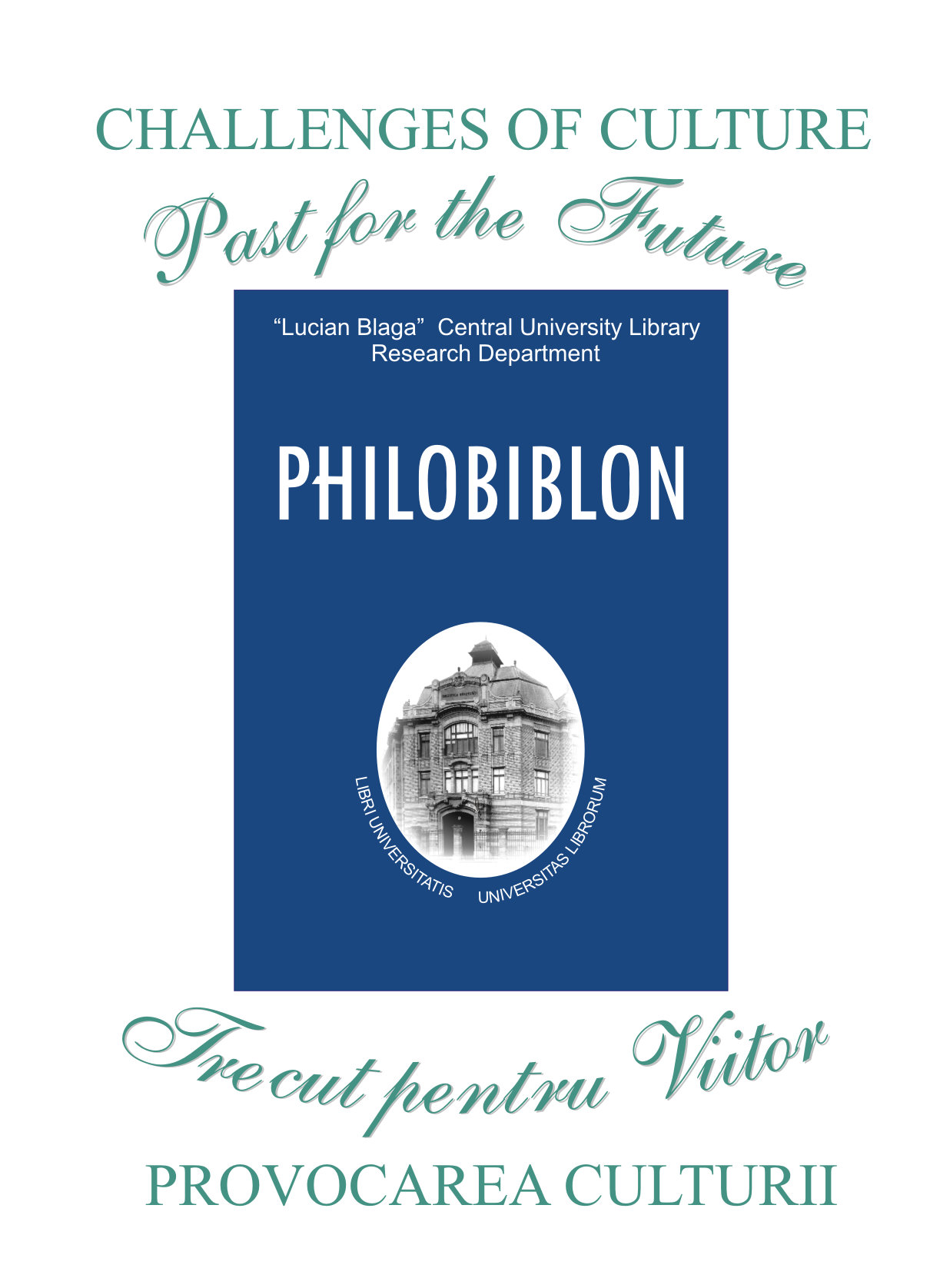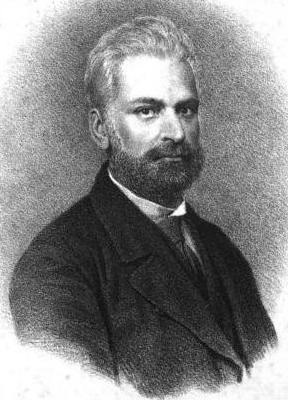|
Central University Library Of Cluj-Napoca
The Lucian Blaga Central University Library of Cluj-Napoca ( ro, Biblioteca Centrală Universitară "Lucian Blaga" din Cluj-Napoca) serves Babeș-Bolyai University in Romania. History The library was founded in 1872, at the same time as Franz Joseph University, which was eventually supplanted by Babeș-Bolyai University. Its initial stock, about 18,000 volumes, was made up by gathering the collections received from the Law Academy of Sibiu, the Medical School and Government Archives of Cluj, and those of Iosif Benigni's rich private collections. In 1873/74 the Transylvanian Museum was transferred to the Central University Library. Its library had been founded in 1859, as the Library of the Society of the Transylvanian Museum, on the basis of donations and grants from Metropolitan Bishops Andrei Șaguna and Alexandru Sterca-Șuluțiu and Count Imre Mikó. In 1860 the Library of the Transylvanian Museum was declared "public" and open for the use of citizens, but in 1873/74 it was ... [...More Info...] [...Related Items...] OR: [Wikipedia] [Google] [Baidu] |
Romanian Academy
The Romanian Academy ( ro, Academia Română ) is a cultural forum founded in Bucharest, Romania, in 1866. It covers the scientific, artistic and literary domains. The academy has 181 active members who are elected for life. According to its bylaws, the academy's main goals are the cultivation of Romanian language and Romanian literature, the study of the national history of Romania and research into major scientific domains. Some of the academy's fundamental projects are the Romanian language dictionary (''Dicționarul explicativ al limbii române''), the dictionary of Romanian literature, and the treatise on the history of the Romanian people. History On the initiative of C. A. Rosetti, the Academy was founded on April 1, 1866, as ''Societatea Literară Română''. The founding members were illustrious members of the Romanian society of the age. The name changed to ''Societatea Academică Romînă'' in 1867, and finally to ''Academia Română'' in 1879, during the reign of ... [...More Info...] [...Related Items...] OR: [Wikipedia] [Google] [Baidu] |
Observator Cultural
''Observator Cultural'' (meaning "The Cultural Observer" in English) is a weekly literary magazine based in Bucharest, Romania. The magazine was started in 2000. The weekly publishes articles on Romania's cultural and arts scene as well as political affairs. See also * List of magazines in Romania In Romania some of the magazines are published by international companies such as Egmont and Axel Springer Verlag. In the country some international magazines in addition to national ones are also published, including ''Forbes Romania'', '' GEO m ... References External links ''Observator Cultural'' online {{Romania-lit-mag-stub 2000 establishments in Romania Magazines established in 2000 Magazines published in Bucharest Romanian-language magazines Literary magazines published in Romania Weekly magazines published in Romania ... [...More Info...] [...Related Items...] OR: [Wikipedia] [Google] [Baidu] |
Philobiblon
''Philobiblon'' is a biannual peer-reviewed academic journal published by the Central University Library of Cluj-Napoca, Romania, in collaboration with Cluj University Press (Presa Universitară Clujeană). It was established in 1996 as a continuation of an irregular publication entitled ''Biblioteca și Învățămîntul'' (''Library and Education''). The subtitles and publication frequency of the journal have changed several times: ''Bulletin of the Lucian Blaga Central University Library'' (1996−2008), ''Journal of the Lucian Blaga Central University Library'' (2009−2010), and currently: ''Transylvanian Journal of Multidisciplinary Research in Humanities''. Until 2011 it was published annually (except for 1996−1997, when it was also published twice a year).The program of the journal has changed, completed over time: see the initial program (1996) and the next (2011) ''Philobiblon'' is available electronically through EBSCO Publishing and ProQuest databases, as well as i ... [...More Info...] [...Related Items...] OR: [Wikipedia] [Google] [Baidu] |
Flóris Korb
Flóris Korb (born as Flóris Nándor Korb, Kecskemét, 7 April 1860 – Budapest, 16 September 1930) was a Hungarian architect.Korb Flóris , retrieved 12 May 2012 Career After finishing his studies in , he returned to to work under for fourteen years, d ...[...More Info...] [...Related Items...] OR: [Wikipedia] [Google] [Baidu] |
Kálmán Giergl
Kálmán Giergl (born as Koloman Giergl, 29 June 1863 in Pest, Hungary, Habsburg Empire – 10 September 1954 in Verőce, Hungary), was a Hungarian-German architect and a significant figure in the Austro-Hungarian eclectic architectural style. A member of the Györgyi-Giergl artistic family. Family background Giergl's family originated from the Tyrol region but for generations were known for their artistic endeavors in Pest. His father Henrik Giergl (1827–1871) was a famous glass artist and among his cousins were Géza Györgyi (hu) (1851–1934) who was an architect and Kálmán Györgyi (hu) (1860–1930) who was an expert on applied arts. Career Giergl finished his studies at Budapest Technical University and the Berlin University of the Arts. He also began his career working for the Gropius and Schmieden company in the German capital. Upon his return to Budapest, he came to work under Alajos Hauszmann at the Budapest Technical University. This is the period w ... [...More Info...] [...Related Items...] OR: [Wikipedia] [Google] [Baidu] |
Brașov
Brașov (, , ; german: Kronstadt; hu, Brassó; la, Corona; Transylvanian Saxon: ''Kruhnen'') is a city in Transylvania, Romania and the administrative centre of Brașov County. According to the latest Romanian census (2011), Brașov has a population of 253,200 making it the 7th most populous city in Romania. The metropolitan area is home to 382,896 residents. Brașov is located in the central part of the country, about north of Bucharest and from the Black Sea. It is surrounded by the Southern Carpathians and is part of the historical region of Transylvania. Historically, the city was the center of the Burzenland, once dominated by the Transylvanian Saxons, and a significant commercial hub on the trade roads between Austria (then Archduchy of Austria, within the Habsburg monarchy, and subsequently Austrian Empire) and Turkey (then Ottoman Empire). It is also where the national anthem of Romania was first sung. Names Brassovia, Brassó, Brașov, etc. According to Dragoș Mo ... [...More Info...] [...Related Items...] OR: [Wikipedia] [Google] [Baidu] |
Coresi
Coresi (also known as diaconul coresi)d. 1583, Brașov) was a Romanian printer of the sixteenth century. He was the editor of some of the earliest printed books in the Romanian language. Biography Coresi first became active at Târgoviște, but then moved to Brașov, where he started printing books not only in Church Slavonic, but also in Romanian. He first learned the art of printing from Dimitrije Ljubavić, who was himself working for the Metropolitanate of Wallachia. List of books printed by Coresi *''Tetraevanghelul'' (1561) *''Întrebare creștinească'' (''Catehismul'') (1561–1562) *''Liturghierul'' (1570) *''Psaltirea'' (1570) See also *First Romanian School The First Romanian School ( ro, Prima școală românească) is located on the grounds of the 16th-century St. Nicholas Church, itself located in the historic district of Șcheii Brașovului, in what is now Brașov, Romania. This is the first s ... References * Petre P. Panaitescu, ''Începuturile și birui ... [...More Info...] [...Related Items...] OR: [Wikipedia] [Google] [Baidu] |
Nuremberg
Nuremberg ( ; german: link=no, Nürnberg ; in the local East Franconian dialect: ''Nämberch'' ) is the second-largest city of the German state of Bavaria after its capital Munich, and its 518,370 (2019) inhabitants make it the 14th-largest city in Germany. On the Pegnitz River (from its confluence with the Rednitz in Fürth onwards: Regnitz, a tributary of the River Main) and the Rhine–Main–Danube Canal, it lies in the Bavarian administrative region of Middle Franconia, and is the largest city and the unofficial capital of Franconia. Nuremberg forms with the neighbouring cities of Fürth, Erlangen and Schwabach a continuous conurbation with a total population of 800,376 (2019), which is the heart of the urban area region with around 1.4 million inhabitants, while the larger Nuremberg Metropolitan Region has approximately 3.6 million inhabitants. The city lies about north of Munich. It is the largest city in the East Franconian dialect area (colloquially: "F ... [...More Info...] [...Related Items...] OR: [Wikipedia] [Google] [Baidu] |
Incunabulum
In the history of printing, an incunable or incunabulum (plural incunables or incunabula, respectively), is a book, pamphlet, or broadside that was printed in the earliest stages of printing in Europe, up to the year 1500. Incunabula were produced before the printing press became widespread on the continent and are distinct from manuscripts, which are documents written by hand. Some authorities include block books from the same time period as incunabula, whereas others limit the term to works printed using movable type. there are about 30,000 distinct incunable editions known. The probable number of surviving individual copies is much higher, estimated at around 125,000 in Germany alone. Through statistical analysis, it is estimated that the number of lost editions is at least 20,000. Around 550,000 copies of around 27,500 different works have been preserved worldwide. Terminology Incunable is the anglicised form of ''incunabulum'', reconstructed singular of Latin ''inc ... [...More Info...] [...Related Items...] OR: [Wikipedia] [Google] [Baidu] |
Gheorghe Sion
Gheorghe Sion (May 22, 1822 – October 1, 1892) was a Moldavian, later Romanian poet, playwright, translator and memoirist. He was born in Mamornița to ''paharnic'' (royal cup-bearer) Ioniță Sion and his wife Eufrosina (''née'' Schina), the daughter of Filiki Eteria member Gheorghe Schina. His uncles included Constantin Sion, author of a semi-fictitious noble genealogy (''Arhondologia Moldovei''); and '' spătar'' Antohi Sion, the rumored author of ''Izvodul lui Clănău'', an outright forgery. After spending two years (1837-1839) at Saint Sava College in Bucharest, the capital of Wallachia, he returned to his native Moldavia. Entering the Iași-based provincial administration, he became a copyist at the Justice Department in 1842, followed by work as a clerk at the Interior Department. He became a wanted man for his participation in the 1848 revolution, and so fled to Austrian-ruled Transylvania. He returned to Iași in 1849, working as bureau chief at the Department of Chu ... [...More Info...] [...Related Items...] OR: [Wikipedia] [Google] [Baidu] |







